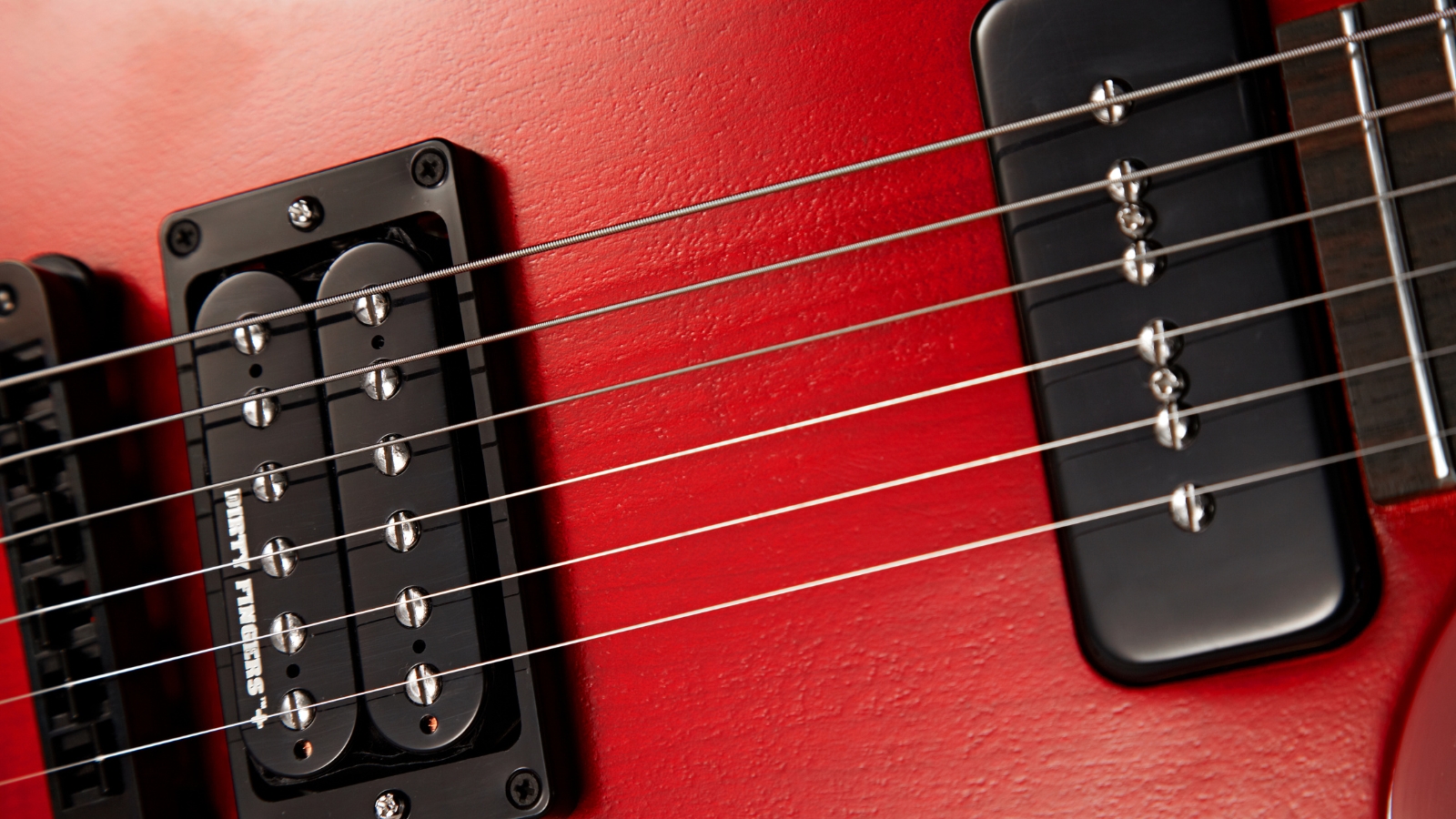
The P90 vs humbucker debate is a tough one, with these two famed pickups being much closer together in sound than the sonic gulf between a regular single coil pickup and a humbucker. Despite their close relationship, there are still plenty of distinctions in both their tonality and their construction to justify some careful thought over which to choose.
When you’re buying a guitar, one of the key components of how it will sound is the pickups it has. More than any other part of the instrument - yourself excluded of course - the pickup type will hugely influence the sounds you can make, so picking the right one for your personal preferences can have massive ramifications.
Play the same riff through a P90 and a humbucker and you’ll immediately feel the difference. They both react differently to pedals, the type of amplifier that you’re playing through, and even your pick attack. So what are the main differences between these two types of pickups? And which one should you choose for your next guitar? Keep reading to find out…
P90 vs humbucker: The history
The P90 and humbucker pickups are designs that have been around for a very long time, with both carving their distinct path that has drastically altered music history. Let's have a look at the origins of both, and how they evolved over time.
History of the P90
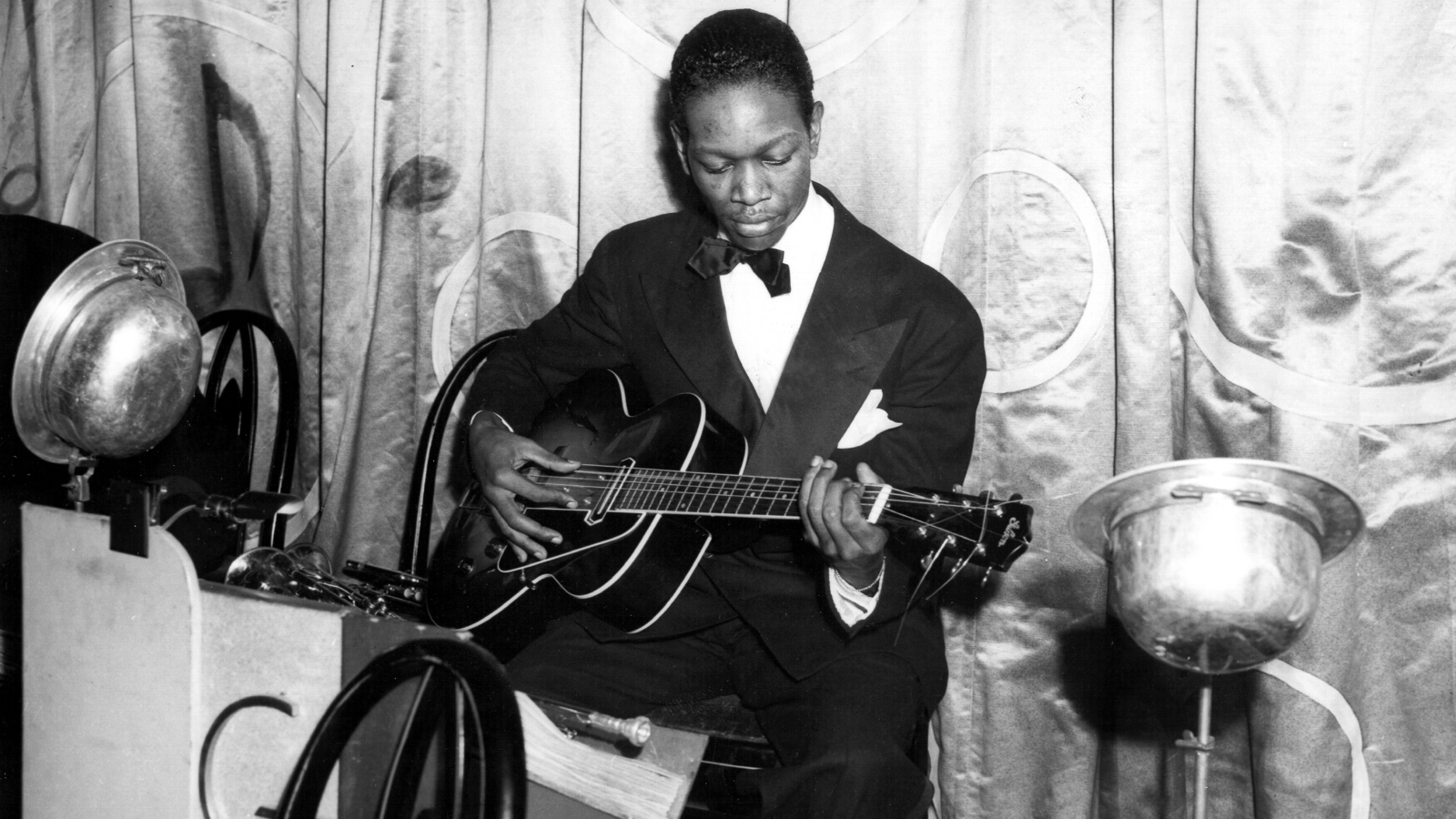
The lineage of the P90 pickup dates back to the 1930s, with its first iteration appearing on Gibson’s ES-150. After becoming synonymous with the famous Jazz guitarist of the time, it came to be known simply as the ‘Charlie Christian’ pickup. The Charlie Christian was constructed using big and heavy steel bar magnets to generate its unique sound, and it’s considered to be one of the greatest jazz pickups ever made, despite being amongst the first guitar pickups!
Moving on to the 1940s Walt Fuller of Gibson guitars invented a much more compact pickup with Alnico magnets and adjustable pole-pieces, named the P13. It followed the weird-by-modern-standards diagonal pickup that came with the ES-300 and was incredibly dark sounding. It was fitted to many of Gibson’s early ES models and lap steel guitars, coming to be very highly regarded by guitarists of the time, and continuing to be used even after Gibson stopped making them.
Post World War II, Walt Fuller was at it again, developing the P90 pickup as we know it today. It was more compact than the P13 and had a slightly higher output than its predecessor and the Charlie Christian pickup. Initially hailed as the successor to the successful Charlie Christian pickup, the P90 had a very short-lived reign as the number one Gibson pickup, due to this newfangled invention called a humbucker…
History of the humbucker
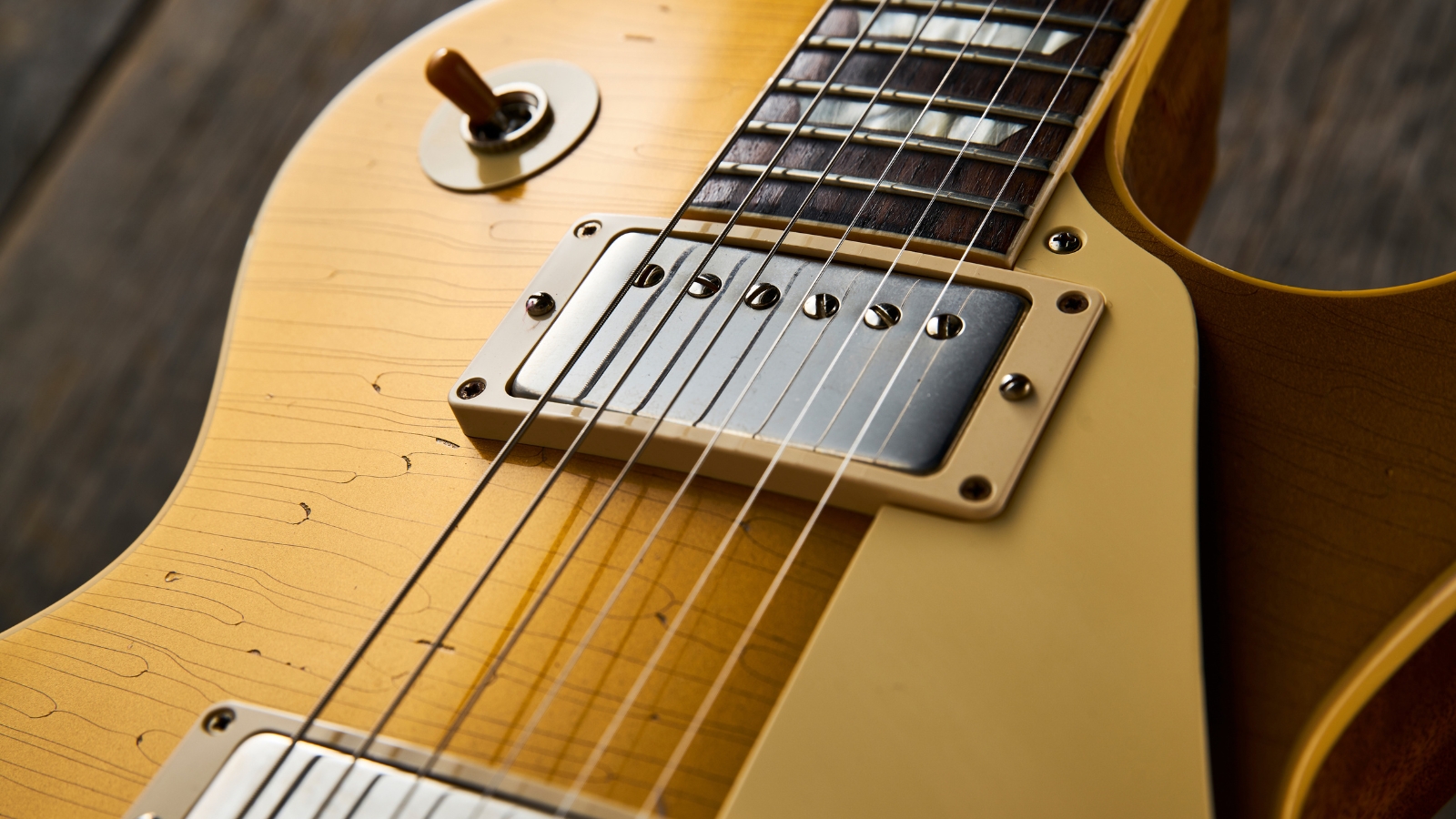
The invention of the first humbucker is widely attributed to the Gibson PAF design, but in actual fact, the first humbucker came a few years before Gibson’s. The Rickenbacker Combo 800 featured a double horseshoe pickup, which was an early configuration of a humbucker that precedes the two most famous examples. Allegedly Rickenbacker disregarded this design because they weren’t fans of the distorted sound it created, which in hindsight would prove to be the appealing factor of a humbucking pickup.
A few years later, both Seth Lover of Gibson and Ray Butts came up with their PAF and Filter’Tron designs, debuting at the same NAMM show in 1957. In an incredible occurrence of coincidence, both designs had patents issued within weeks of one another, and the world of guitar gained two pickups that didn’t have any 60-cycle hum. There is loads of debate over which came first and many interesting stories around the initial design phases of both pickups.
Despite these two designs coming about at the same time, in the end, it was Seth Lover’s PAF that became the more iconic of the two, largely thanks to it being used in the ever-popular Gibson Les Paul. Whilst Butts’ Filter’Tron design still had its plaudits, most players see the PAF as the holy grail of humbucker tone. Since their inception, humbuckers have been a mainstay of countless guitar manufacturers and have never seemed to drop in popularity, finding their way onto some of the most iconic records and guitars of all time.
Return of the P90
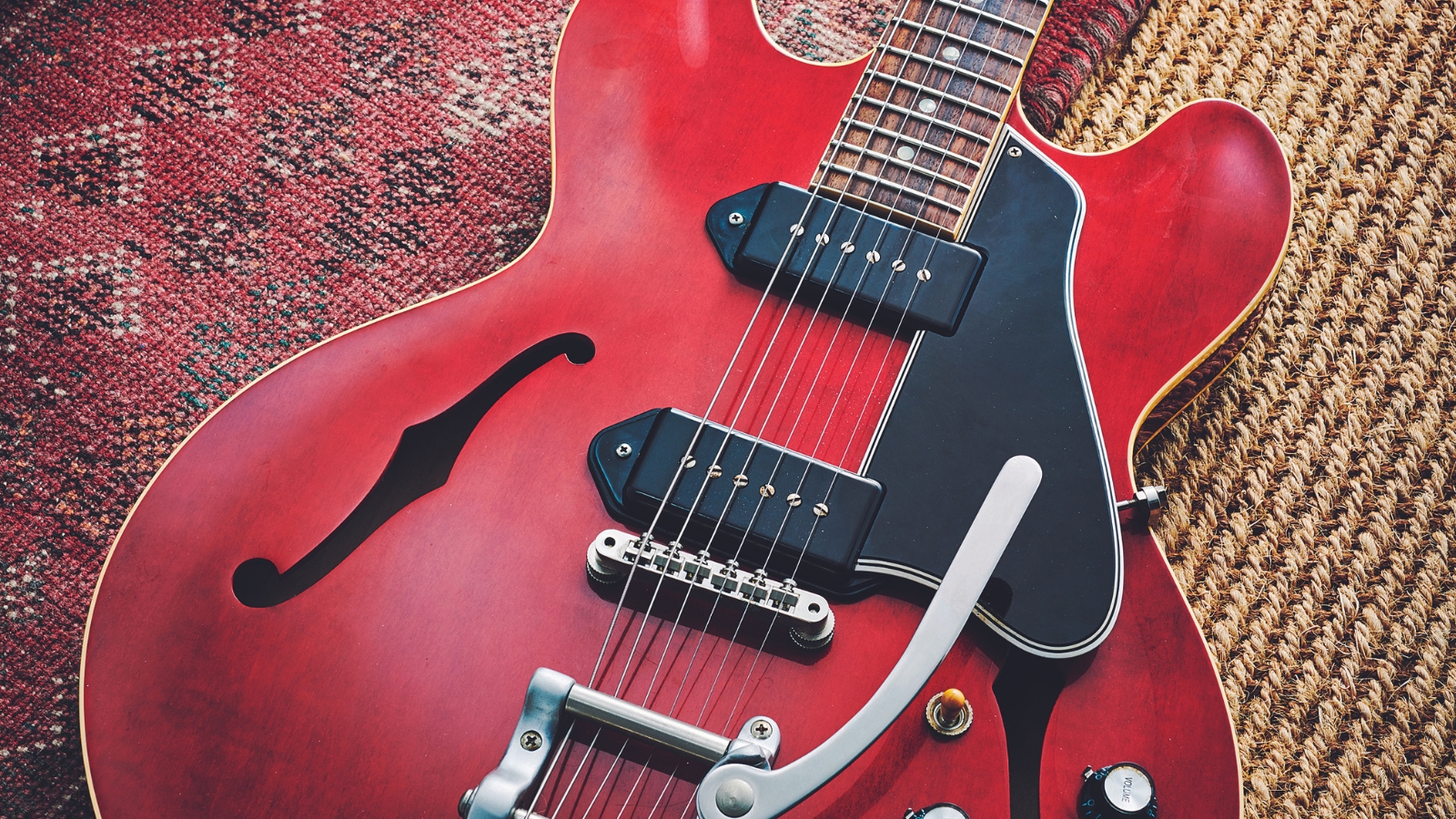
While the humbucker was taking all the plaudits for Gibson, the P90 was relegated to budget guitar duties, appearing on the ES-330 and the Les Paul Junior. It was some time until it saw a resurgence when in the 1960s guitarists like Pete Townshend and Carlos Santana began utilizing the brighter tonality, bringing the P90 back into the limelight.
Seeing the popularity of the P90 rise again, Gibson began issuing more models with the pickup as stock, including the Les Paul ‘55, the Les Paul Pro, and some Les Paul Special DC models. The latter soon found its way into the hands of the 1970s punk scene, becoming a top choice for punk players, and with Mick Jones of The Clash and Steve Jones of The Sex Pistols wielding their P90-equipped Les Paul Junior’s, the P90 was back for good.
P90 vs humbucker: How they’re made
Pickups in the modern age tend to consist of three main components, the bobbin, the pole pieces, and a wire wrap. All pickups contain these key parts, but they’re all made slightly differently. On a single coil, the pole pieces - those small metal circles on the face of the pickup - are the magnetic part of the construction. On a P90 however, the design is slightly different, having more in common with a humbucker - more on which later.
How a P-90 is made
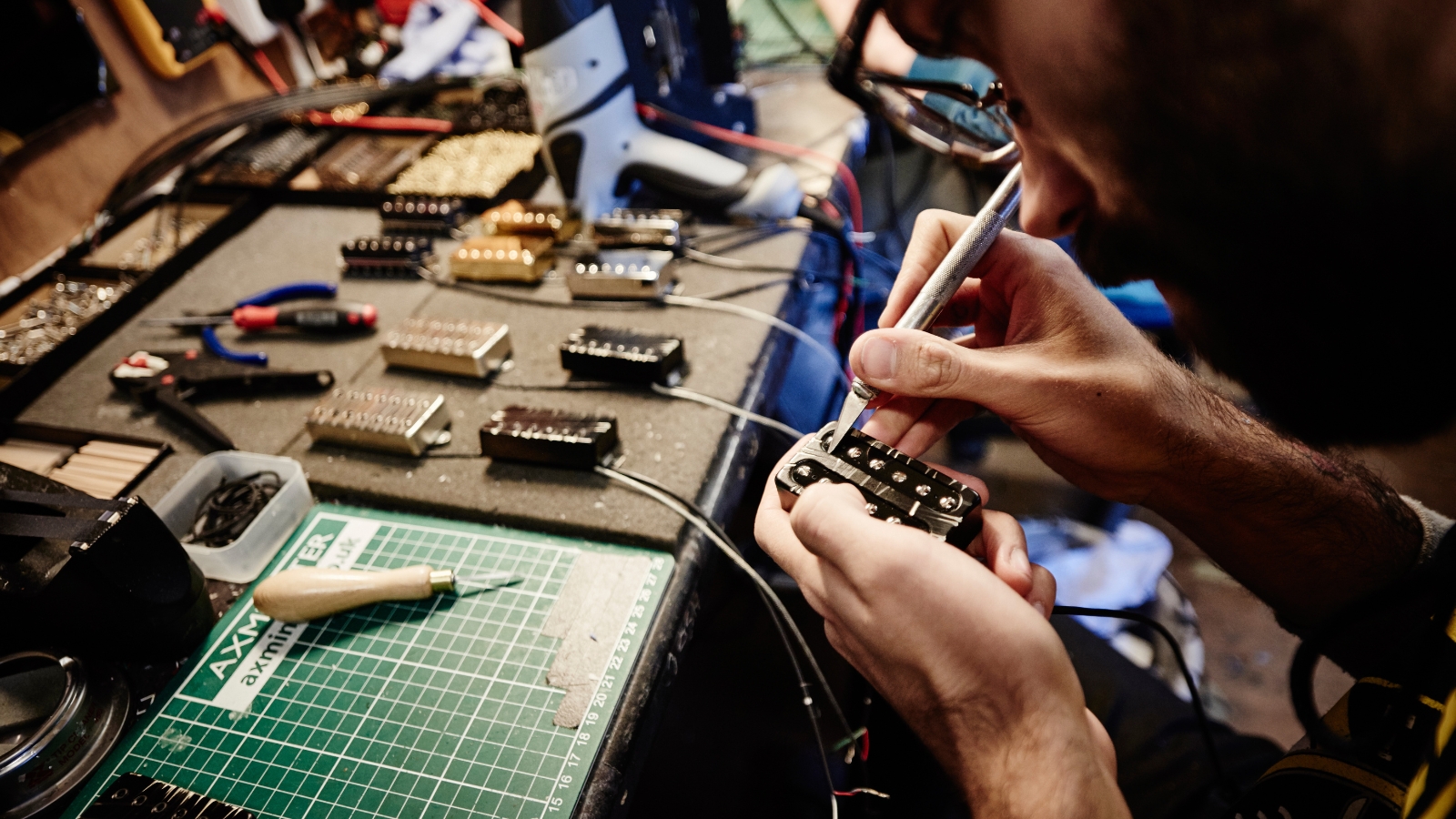
A P90 has two magnets at the bottom of the pickup, with a metal spacer bar in between them. The steel pole pieces are screwed into this plate, and wire is wrapped around the pole pieces to create the electromagnet. The magnets induce a magnetic field in combination with the pole pieces which picks up the vibration of your strings and takes it to your amplifier.
The P-90 comes in two formats, with the ‘dog ear’ design being the first. This was a method of securing the pickup to the body, and you’ll see this design a lot on ES-type guitars, as well as some LP and SG models. The ‘dog ear’ style is a fixed height design, so if you want to raise the height you’ll need to use shims, whereas lowering would require serious routing of the guitar body.
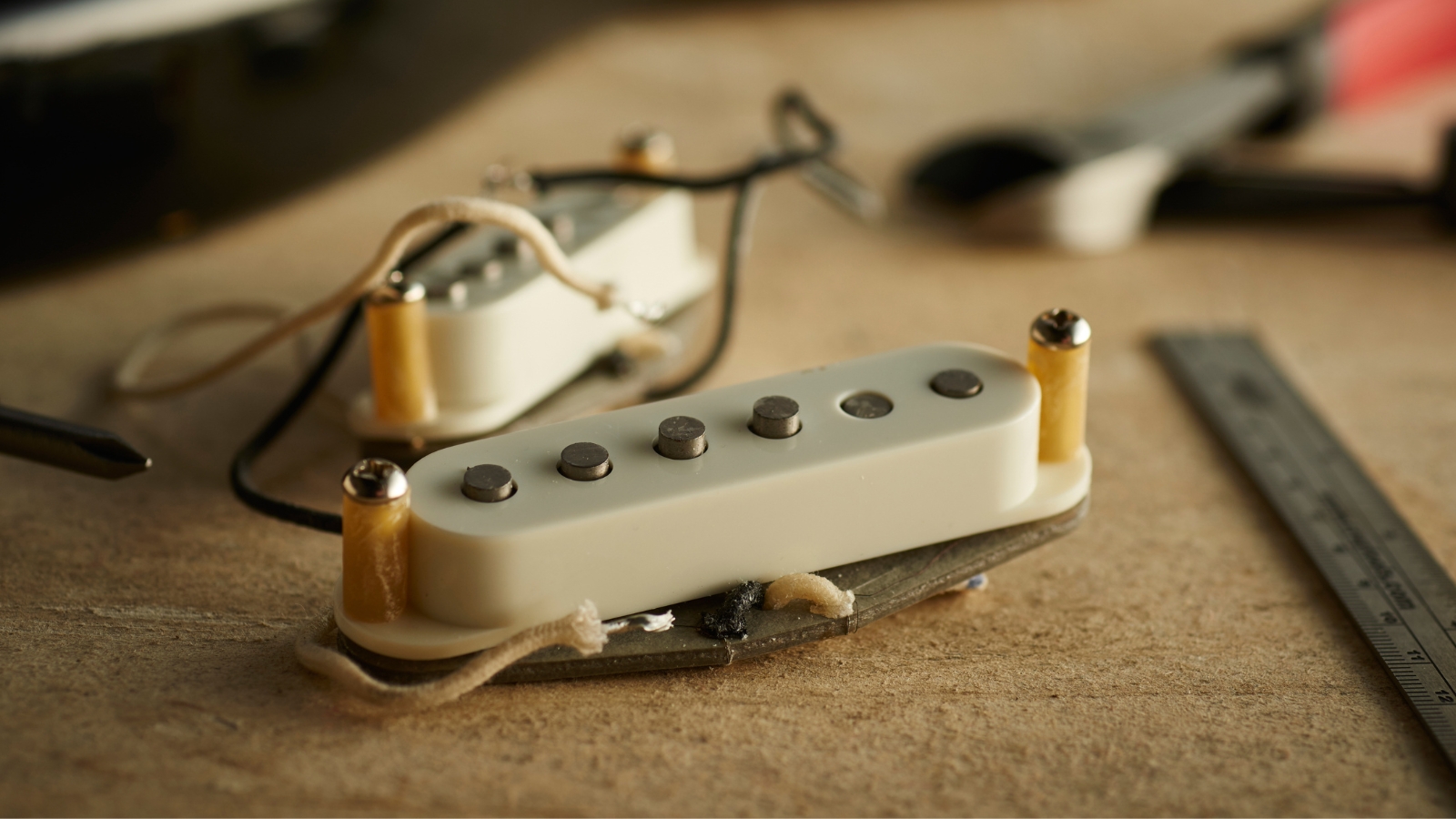
Best humbucker pickups: Vintage PAF to modern chug
Best P90 pickups: Get that growling tonal versatility
Best single coil pickups: Strat spank and Tele twang
Best acoustic guitar pickups: Make your acoustic sing
The second type of P90 is the ‘soap bar’ style with screws that also go direct into the guitar body, through the middle of the pickup. These screws sometimes get mistaken for pole pieces, but can typically be distinguished as the pole pieces will use a flathead screw, whilst the pickup screws have Phillips heads. You can raise and lower the height of a soap bar P90 without any routing or shims, as the two height adjustment screws are installed with a set of springs that allow for easy adjustment compared to the ‘dog ear’.
Some pickup manufacturers also produce a humbucker-sized P90, which allows you to directly swap a P90 in for a humbucker. Great for changing the sound of your guitar without serious modification. If you’re desperate for that P90 sound but don’t want to start carving out your guitar body, these are a great choice.
How a humbucker is made
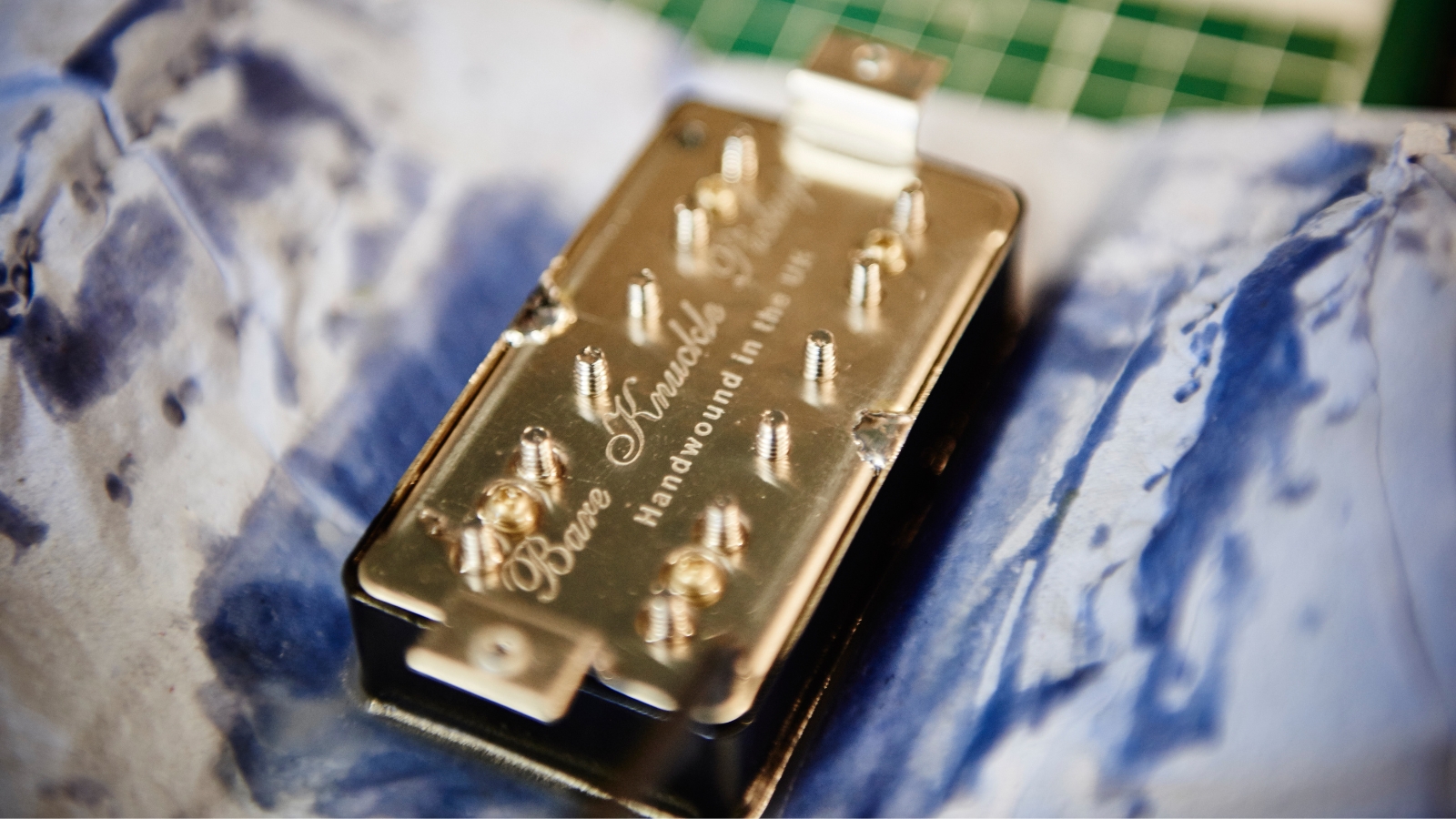
A humbucker pickup has two coils and like the P90, features a magnet at the base of the construction. On the majority of humbucker’s these magnets will be Alnico, but you’ll also find ceramic magnets for higher output designs. One coil has a set of steel screws whilst the other has steel slugs and each of these is wrapped with copper wire to create the electromagnet.
The two coils are wired ‘out of phase’ with one another and sit with the ‘north’ of one coil facing the strings whilst the ‘south’ of the second coil faces upwards too. This ingenious design is why the humbucker doesn’t pick up electrical interference or 60-cycle hum, working similarly to a balanced audio cable with its noise-canceling function. Whereas P90s can act like an RF antenna, the humbucker has no such troubles.
Humbuckers typically come in either an open cover where you can see the two coils, or the closed cover style where a single line of screws is visible. An open-cover humbucker usually sounds slightly brighter than the covered style, and humbuckers with a metallic cover tend to be better at rejecting interference and 60-cycle hum, although this is not necessarily guaranteed as humbucker pickup designs vary so much.
P90 vs humbucker: How they sound
Although they're not quite as far apart as a single coil and a humbucker pickup, both the P90 and the humbucker have their own characteristics that set them apart from one another. Each can excel at many types of guitar playing, fitting into a myriad of different genres.
How a P90 sounds
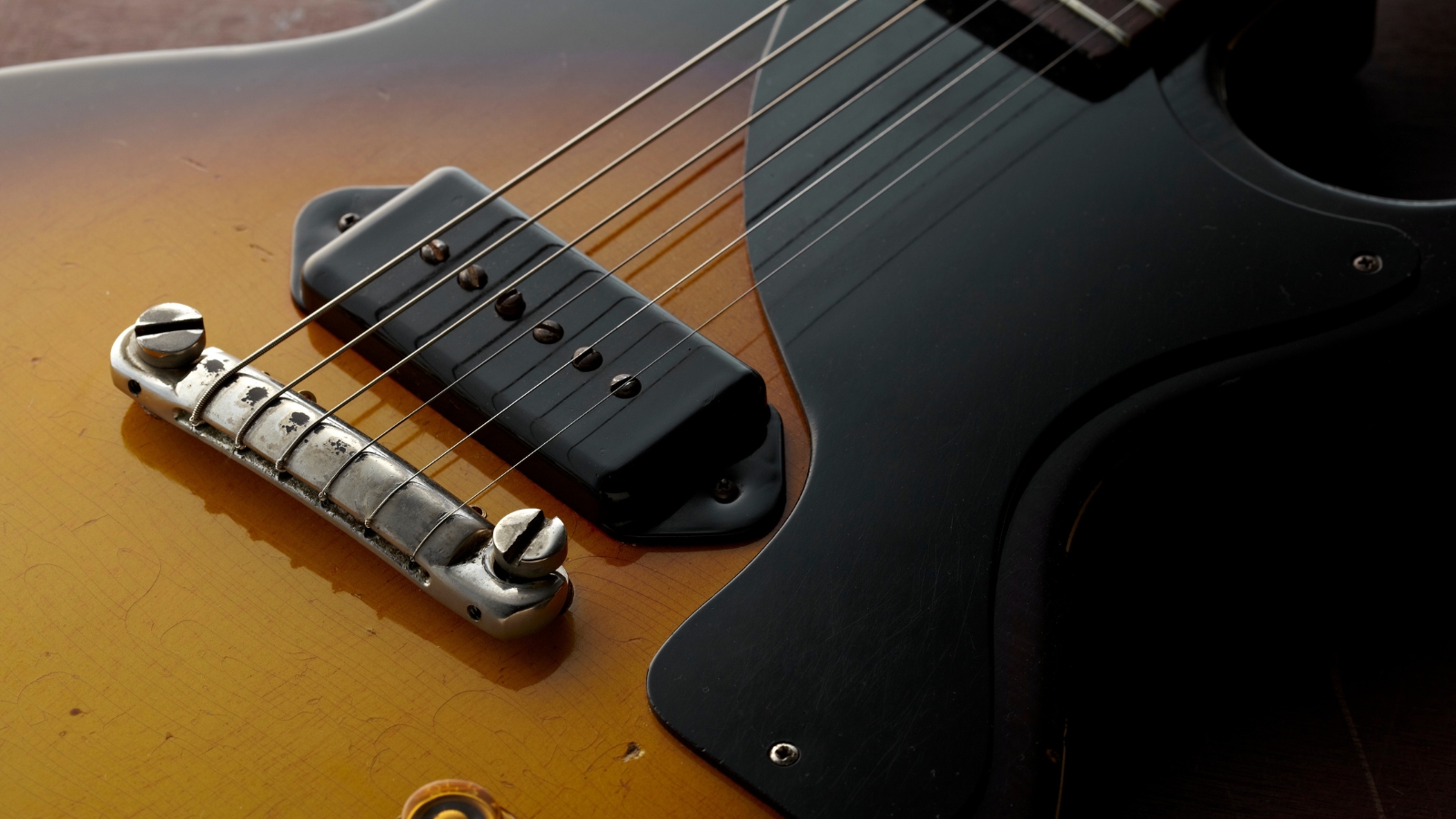
The P90 is often described as having a ‘growl’ to it, combining the treble bite of a single coil with a nice dose of midrange and low end for a thicker tone. The EQ of a P90 tends to be very balanced across the spectrum, with a slight spike in the treble range. Like single coils they’re very articulate, making them great for a wide variety of playing styles. You’ll find they work equally great for chunky power chords, bluesy lead work, or just clean arpeggiated picking.
Although not quite as dynamic as a single coil you can still get a lot of different sounds out of them by simply adjusting your pick attack and playing with your volume control. When played clean, a P90 will be warmer than a single coil but with a similar clarity. P90s don’t typically end up sounding brittle like some single coils and they can absolutely scream when you turn up the drive.
It will reward you with a throaty roar that cuts through a mix beautifully
Put a P90 through some overdrive pedals or a higher gain amp and it will reward you with a throaty roar that cuts through a mix beautifully. They’re great for blues, rock, and punk making them a super versatile choice for any guitar player. Although a P90 probably wouldn’t be your first port of call for metal, the sound of Tony Iommi on the first few Black Sabbath albums was a rewound P90, so they can definitely get heavy.
At heart, the P90 is a single coil, which means there will be a buzz or hum, particularly noticeable when you turn up the volume. P90s can get pretty out of control when paired with high gain, so you’ll definitely want a noise gate pedal if you’re using it this way. The modern age has seen more ‘noiseless’ or hum-canceling P90s being made by major manufacturers, including companies like Seymour Duncan, DiMarzio, and Lindy Fralin, although purists might argue that the hum is part of the magic.
How a humbucker sounds
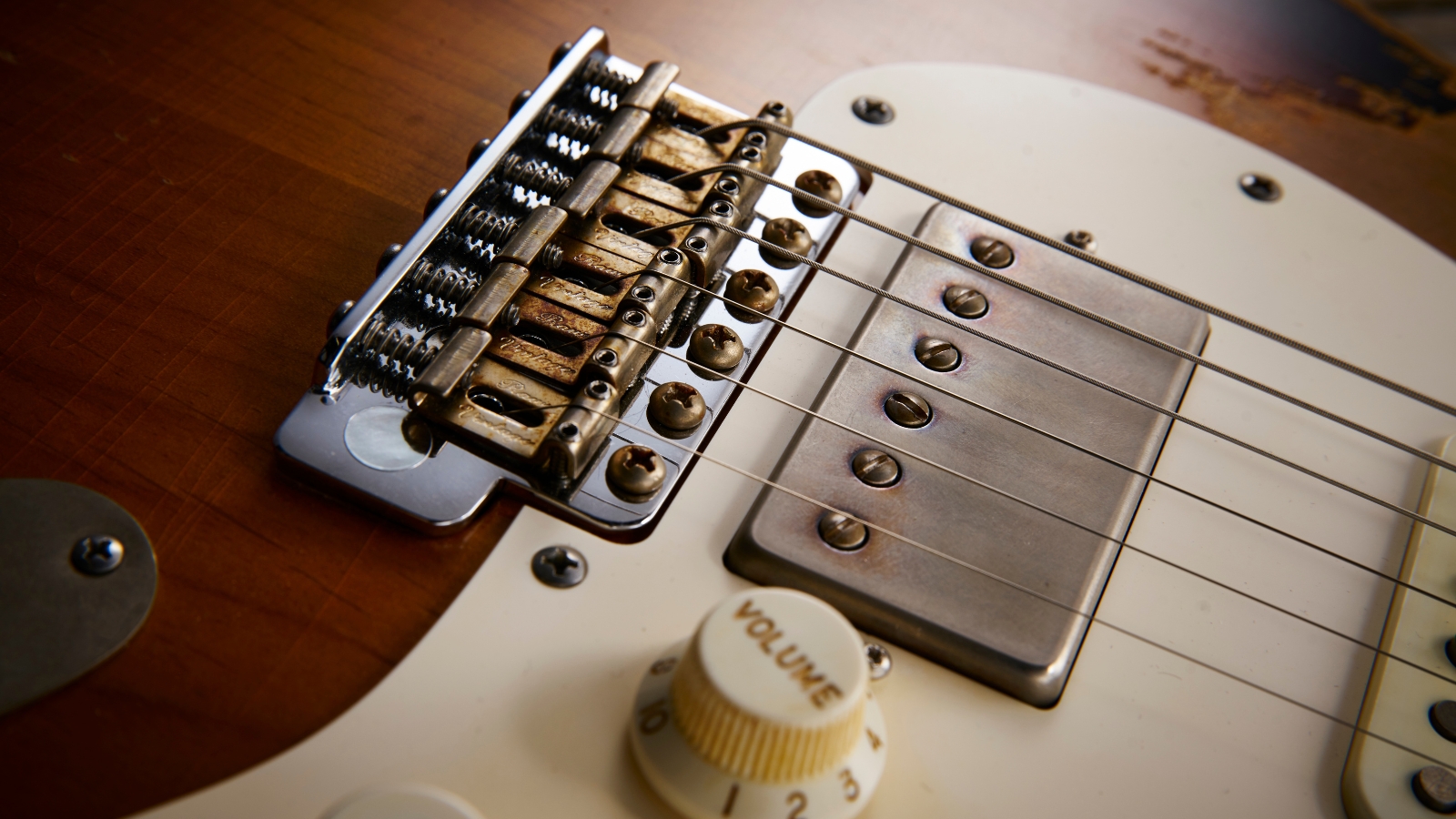
Humbuckers have a higher output than a P90, so offer a very different playing experience. There’s also so much variety in humbucker construction due to their popularity that it’s hard to place them on the EQ spectrum. Some humbuckers will have scooped mids, and others like the famous Seymour Duncan JB have a more obvious middle and top end. Modern humbuckers designed for high gain and down tuning tend to have a lot more top end to cope with 7-string and extended range guitars, whereas others have a hugely boosted midrange to help cut through in a full band mix.
The clean sound of a humbucker is lovely and thick, but won’t have the same clarity as a P90 when playing arpeggios. Their sound is very warm and full, which makes the humbucker the number one choice for rock and metal. Dial up the gain and a humbucker will really start to sing, offering incredible sustain and a punchy tonality that works brilliantly with power chords and lead guitar work. They offer bags of power for your playing so they’re not quite as dynamic as a P90 or a single coil, but they’re still versatile enough to handle a variety of musical styles.
Due to the way they’re wired, there is no hum from a humbucker, another reason they pair so well with high-gain setups. Of course, a humbucker will still feedback at high volumes, but they’re far less likely to pick up any extraneous electrical interference, a desirable trait for both live shows and studio work. Although humbuckers were considered to be an upgrade on P90s, we don’t feel one is better than the other, they’re just different tools for different jobs, which leads us nicely to our next point.
P90 vs humbucker: Which is best for me?
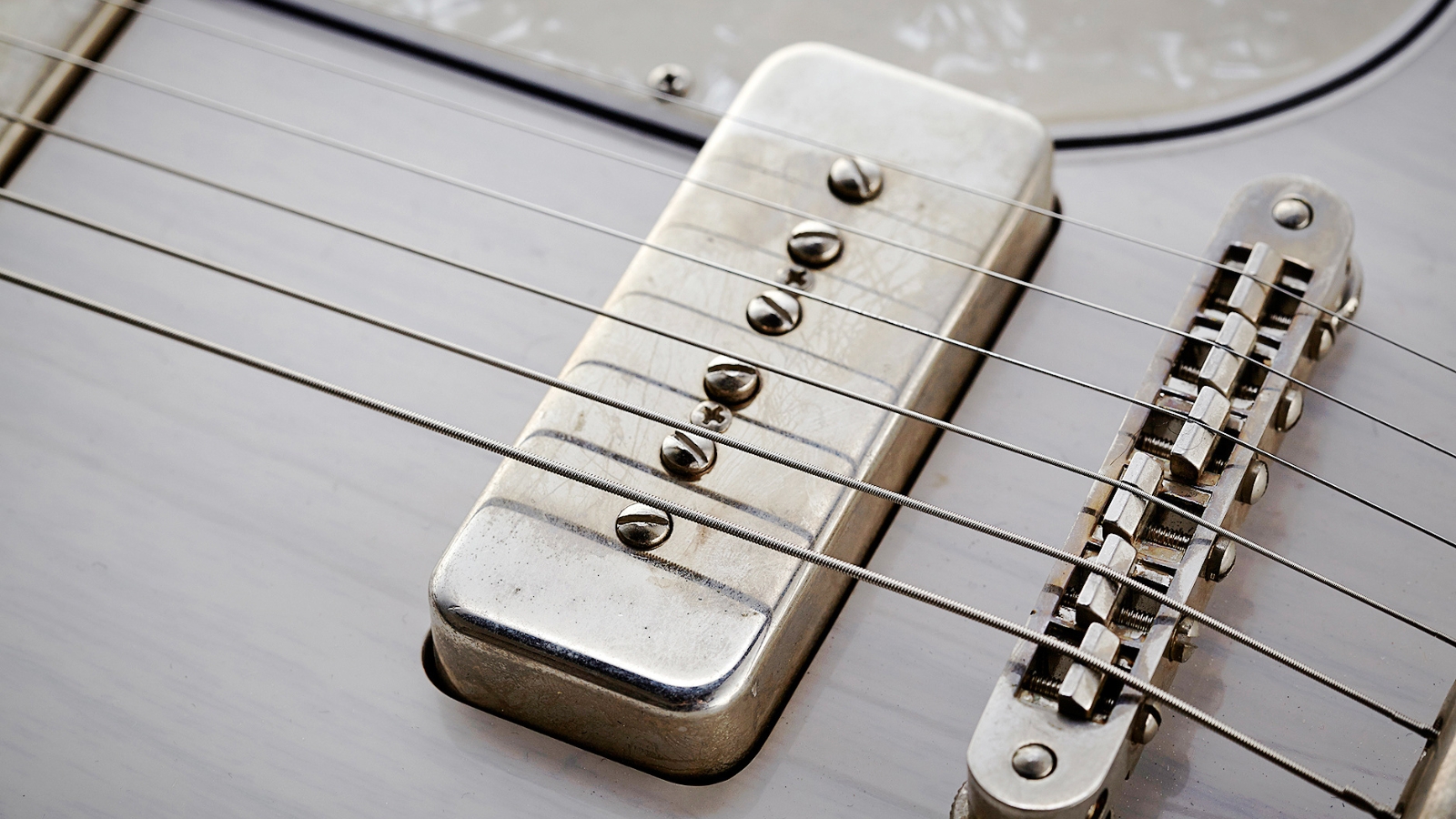
As with anything of this ilk, we’d highly recommend trying both a P90 and a humbucker out for yourself before committing to a purchase. Despite the similar size and construction, these are very different pickups, which will change the way you play your guitar. It’s not often you’ll find a guitar with humbuckers and a P90 on it, although there are some select Gretsch, Yamaha, and Duesenberg guitars that feature this configuration.
This means the chances are you’ll need to pick one or the other. P90s have lower output, so they do brilliantly at punk, rock, and blues guitar. The output level and tonal profile give them beautiful clarity and although they can definitely bite when you want to turn things up, they won’t quite hit djent territory. If you find a single coil isn’t quite cutting it for you, but a humbucker is a little too powerful, then a P90 might just be the middle ground you’re looking for.
A humbucker on the other hand is definitely geared towards harder styles with their plentiful output making them perfect for blues, rock, and metal. A humbucker’s tonal profile is warmer and smoother than a P90, but they can still do styles like pop and jazz depending on how you utilize them. There’s a reason they’re so popular, and that’s because you can cover a lot of ground with them. Many humbuckers also come with coil split functions, so you can get the spankier sound of a single coil from one.
The key with any pickup is that you should choose one that suits your playing style. If you’re into hard rock and metal, a humbucker makes sense. If you want something that will cover punk and blues, a P90 might be the better choice. That said there’s a lot of overlap between the two, and there’s no reason you can’t play punk with a humbucker or metal with a P90 if you want to. Whichever it is you choose, we don’t doubt you’ll have a lot of fun with either of these brilliant pickups.







